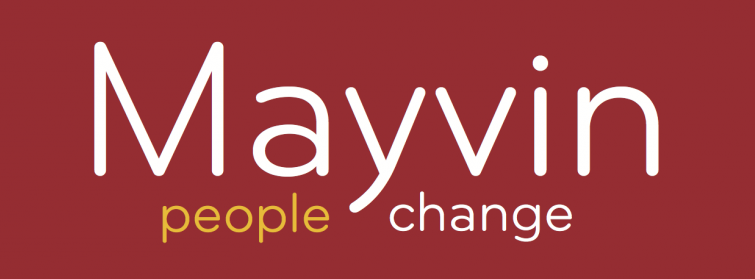Charged conversations are hard and they are everywhere.
To know what is happening, push less, open out and be aware. See without staring. Listen quietly rather than listening hard. Use intuition and reflection rather than trying to figure things out.
Lao Tzu 14 (translation, John Heider)
What kinds of conversations are you having?
Think of the most valuable conversations you have had in your life, with loved ones or strangers, friends or distant acquaintances. What was the quality – the texture, the feel, the rhythm – of those conversations?
My hunch is that the conversations you are thinking of were not comfortable or easy. They were not necessarily long, although there were plenty of moments of silence. And that you and your conversational partner both left seeing the world a little differently.
Now consider the quality of the usual conversations you have at work. Are they generous exchanges, rich and unpredictable like a piece of music? Awkward like a formal dance you don’t quite know the rules to, or automatic back-and-forths like a game of ping-pong?
The Charge
In Mayvin’s work we are seeing our clients rub up against difference more and more, revealing itself in charged conversations, discomfort and awkwardness. It’s as if the world is asking that we make unlikely, uncomfortable but transformative connections. This manifests during explicit discussions of diversity and inclusion, but it’s also just ‘in the air’. For Mayvin, this can often be the case in the apparently straightforward rubber-stamping meeting with an ExCo.
Imagine: groundwork done, a sound proposal and CEO and senior stakeholders onside. The meeting is side-tracked by other business, leaving us with only half of the hour allocated – but hey, still enough if we can keep things moving. The conversation starts cordially but as we launch into the first proposal, our sponsor, to our surprise, zeroes in on a detail of the language used. Everyone else piles in. 10 minutes vanish. Further unexpected concerns on the detail dog us, even as we try to speed along to the meat of the conversation. The atmosphere deteriorates, exchanges take on more of an edge, yet still we press on. We are politely but firmly invited to think again and come back with some more suitable proposals and with that we are escorted from the room.
Does this sound familiar? These kinds of encounter can happen even when everyone involved is skilful and well-intentioned, and when the quality of the work under discussion is good and well-researched. It’s as if some malevolent spirit has taken over the proceedings and is deliberately sowing discord. So what happens to cause people to ‘miss’ each other in this way?
Where do you feel it?
There is a visceral charge in these conversations. Were we to pay attention, this charge may arise as a tension in the chest, a prickling of the skin, a hardening in tone of voice, a shallowness of breath. There is sometimes literally a contraction into ourselves and away from others as we experience some degree of flight or freeze nervous system response. Or perhaps a ‘fronting up’ and hardening to others if we are experience a ‘fight’ response. Either way, we find ourselves in a more reactive place, operating from habit, feeling the need to defend our position or make ourselves heard even if that means no longer listening: anxiously filling the pregnant pause, tuning out of the conversation, withdrawing eye contact.
The charge comes from different places, at different moments for all of us, and for very different reasons buried deep in our identities and personal histories. Consider some significant recurring situation that you experience as charged and to which you react in ways that aren’t helpful. It might be a problematic relationship or a difficult dynamic with a team or stakeholder. Feel into the specific quality of your own experience – the physical sensations, energy levels, and mood. If it’s possible, see if you can even lean into it and amplify it. There’s normally a story or thought pattern that goes along with the physical and emotional pattern: each element a note in a chord. For us in the case above it was “we need to deliver for this client and they are making it difficult.” What is yours?
The practice of centering
While each experience is felt uniquely, most of us can relate it to a sense of being knocked ‘off-centre’. Likely you can see in hindsight that the way you react is not helpful, but in the moment you are gripped by some habit you can’t quite intervene in. In contrast, when we are ‘coming from centre’ we can engage directly with the present moment, taking space to respond rather than react. There is a gathering of your hitherto scattered energies which can now be directed with intention. This experience of ‘centre’ is not just psychological but a scientifically recognised state of psychophysical coherence where our breath, heart rate, blood pressure, brain waves are all in sync, not dissimilar to the experience of being in a ‘flow state’.
Fluidity is part of the experience of being centred. ‘Centre’ isn’t a psychological fortress to protect yourself from the messiness of the world so you can grit your teeth and persevere no matter what. Mindfulness can sometimes become confused with becoming numb or unresponsive to the messiness of the world when in fact it is a practice of becoming “intimate with all things” (Dogen-Zengi, Zen master). Similarly, being 'off-centre' is simply part of engaging, of being intimate with the messiness of the world – including your own messiness. Centering is a practice much like walking: you have to lose your balance to find your balance, over and over and over and over again. So be gentle with yourself and others when – inevitably – the charge comes and reminds you of your vulnerability.
Charged conversations as a source of creativity
And perhaps sometimes you may even be able to see it as an offering. The choice of the word “charge” is not an accident: it’s a sign of latent energy in the system starting to disrupt, a sign that a different voice needs to be heard and perhaps that something new is wanting to emerge. In the case above, the system perhaps could have been pointing us to hidden loyalties towards a previous CEO, the need to find a scapegoat to deflect from the emotional upheaval of underlying problems in the business, or conflicting demands emerging from their Board.
Charged conversations are hard and they are everywhere. To turn that charge into creative energy, we need to keep getting better at regulating our inner landscapes and keep looping back wholeheartedly to ourselves and each other. Embodiment – inhabiting our bodies more fully – is about getting more intimate with that inner landscape and with life itself. At Mayvin we want the practice of embodiment to go beyond the wellbeing agenda, to breathe life into the relational and creative aspects of organisations too.
With that in mind, we ran two artful sessions on embodiment: Rest as a Radical Act in Exhausting Times and Living from Centre More of the Time. We also produced two podcasts following on from the session on rest: How can embodiment techniques be helpful in the workplace? and Sophie's Nidra Meditation.
You can see the full list of our events on our Events Calendar.
Feel free to experiment with five centering micro-practices below – they can take less than a minute.
Centering Micro-practices
- Centering with the breath: inhale of a count of three, exhale for a count of three. Lengthen the inhale and exhale until they both reach a count of six. On the inhale, welcome the world in, as it is. On the exhale, send your intention out to the world.
- Visualisation Centering: What image would help you to centre right now? Tree/fire/melting wax/clouds etc. Use nature for inspiration.
- Social centering: Imagining a hand on your back of a loved one or mentor and a specific phrase or mantra that is meaningful to you.
- Centering with presence (courtesy of Wendy Palmer’s Leadership Embodiment): on the inhale, find uplift through the spine, feeling your full height. Long exhale down your front, softening your chest. Think of something that makes you smile. Have a sense of your personal space like a bubble and expand it out to the front, side, back, then filling the room. Settle into this sense of space around you. Bring your quality present – how would it feel if I had 2% more ease?
- Meaning Centering: Hand on belly, hand on heart. Breathe deeply. What really matters here?
Find one that feels more comfortable or easy for you. Practice it regularly several times a day by integrating it into your daily activities - e.g. every time you make a cup of tea or get onto the tube. Let us know how you get on!

